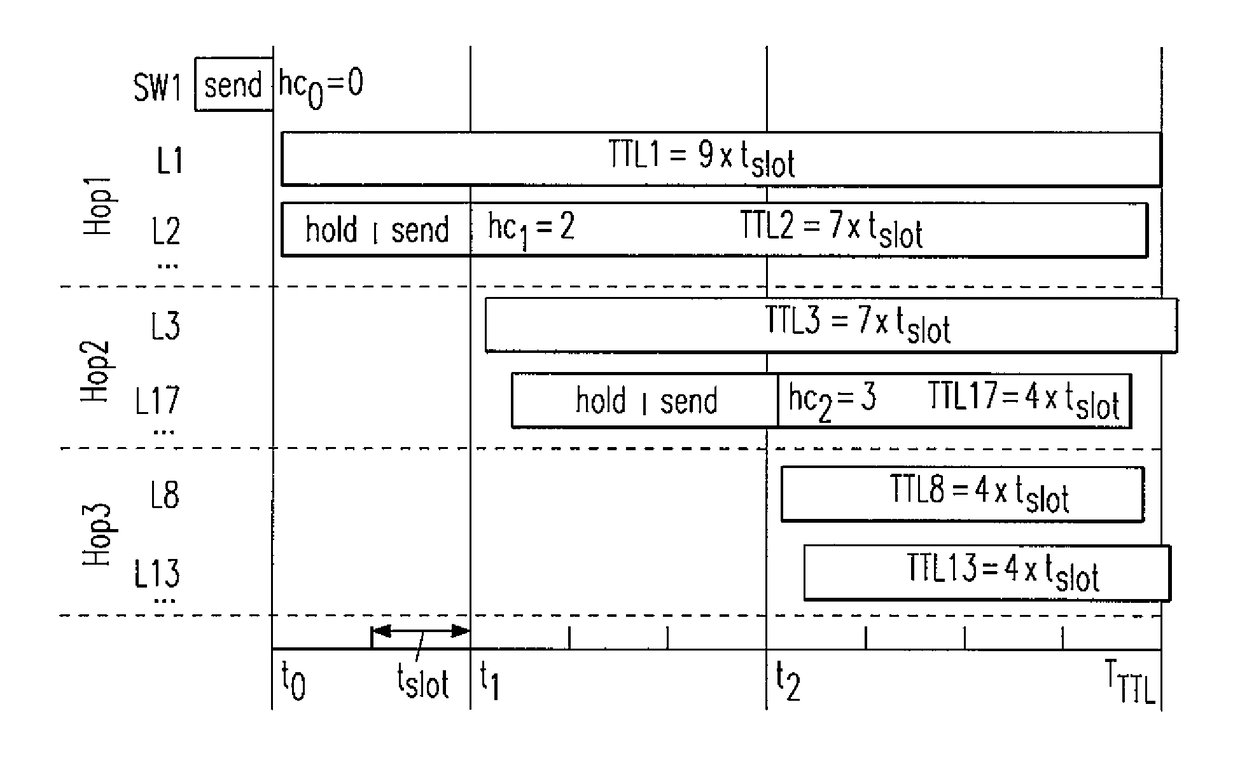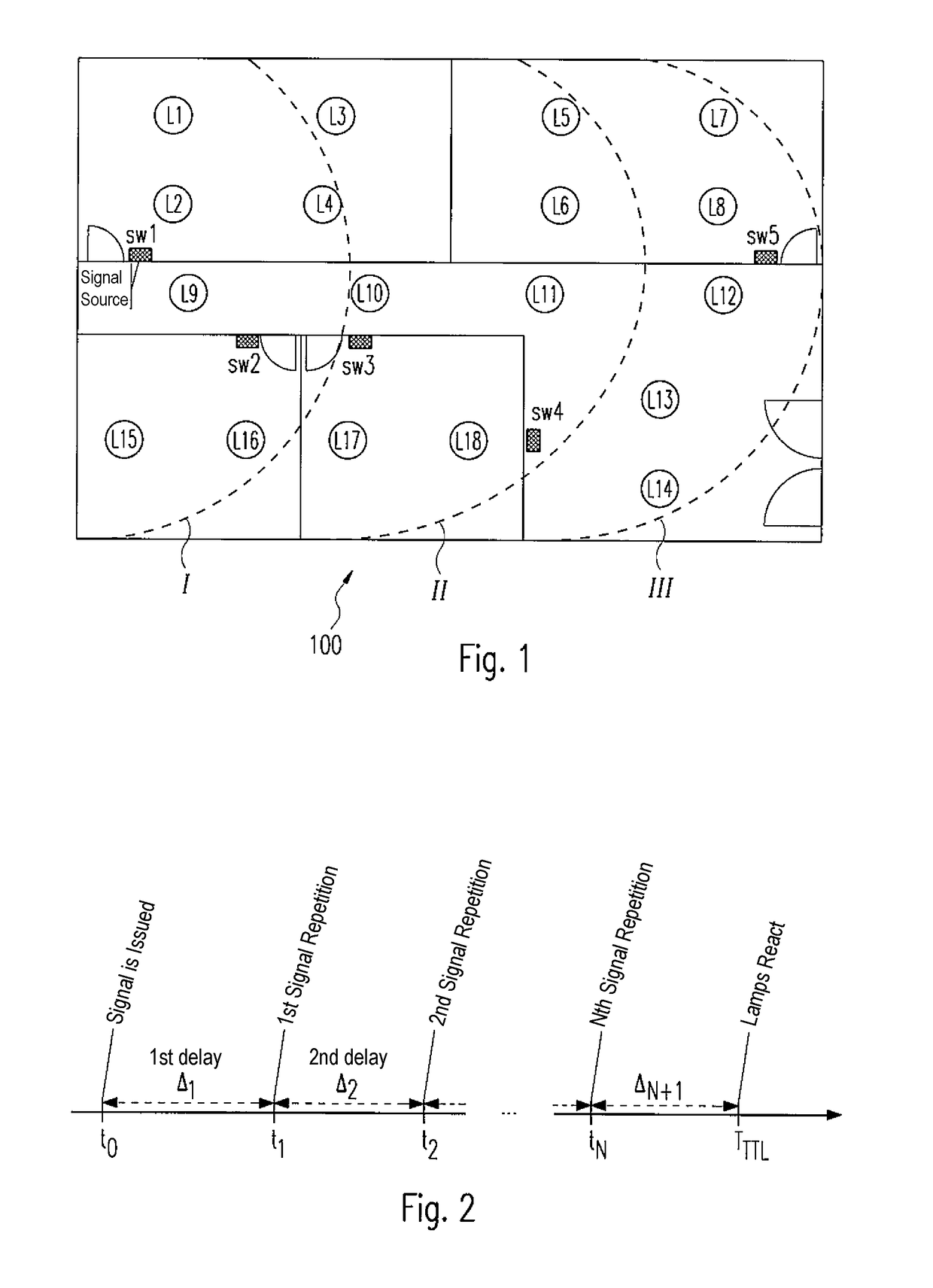Method and System for Transmitting Control Commands for Units in a Distributed Arrangement
a technology of control commands and distributed arrangement, which is applied in the direction of digital transmission, transmission, data switching networks, etc., can solve the problems of difficult to achieve temporal synchronization performance of lamps, and achieve the effect of preventing the cascading activation of lamps and accelerating the propagation significantly faster
- Summary
- Abstract
- Description
- Claims
- Application Information
AI Technical Summary
Benefits of technology
Problems solved by technology
Method used
Image
Examples
Embodiment Construction
[0023]The invention shall be explained in greater detail below based on a lighting system in which the control commands are transmitted wirelessly—e.g. by radio or infrared—to lamps of the system in a distributed arrangement. As specified above, however, the present invention is not limited to lighting systems, even though temporal deviations in the activation of the units of the system can be most easily observed here. It may also be the case that a synchronized performance of the various units in other systems is desired, e.g. in a system for central activation of shading systems such as blinds or the like, for which reason, the invention can be used in a very versatile manner.
[0024]Furthermore, the approach according to the invention can be applied in a simple manner to systems in which the signal transmission is not wireless, but instead takes place via physical lines. This may be the case, in particular, when there are complex bus systems, in which numerous different subsystems...
PUM
 Login to View More
Login to View More Abstract
Description
Claims
Application Information
 Login to View More
Login to View More - R&D
- Intellectual Property
- Life Sciences
- Materials
- Tech Scout
- Unparalleled Data Quality
- Higher Quality Content
- 60% Fewer Hallucinations
Browse by: Latest US Patents, China's latest patents, Technical Efficacy Thesaurus, Application Domain, Technology Topic, Popular Technical Reports.
© 2025 PatSnap. All rights reserved.Legal|Privacy policy|Modern Slavery Act Transparency Statement|Sitemap|About US| Contact US: help@patsnap.com



